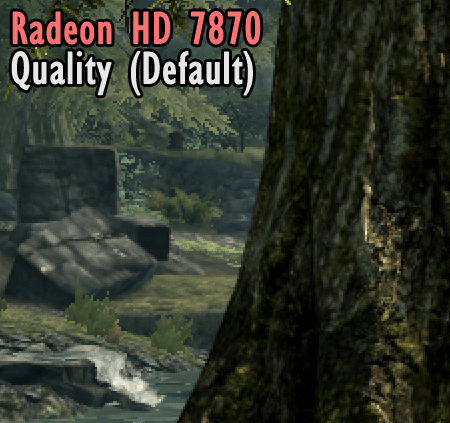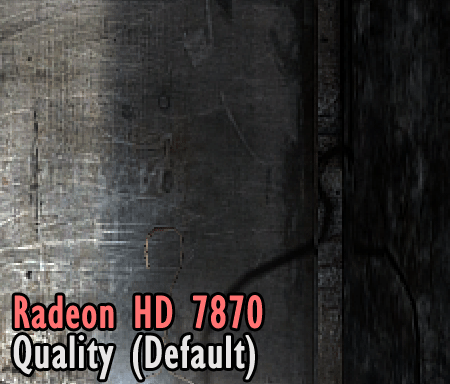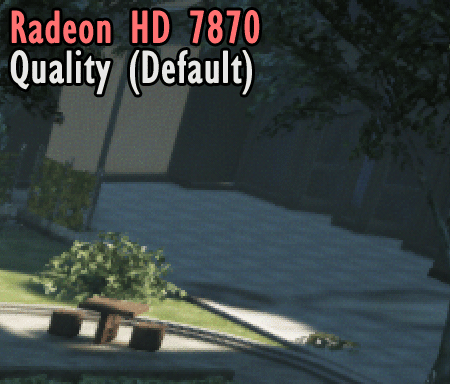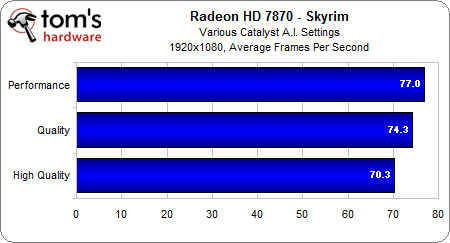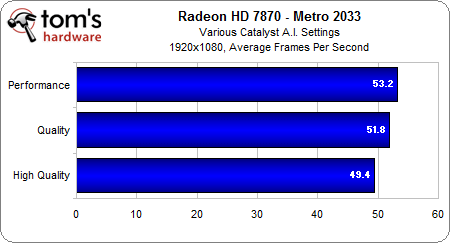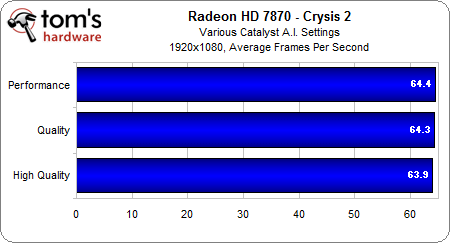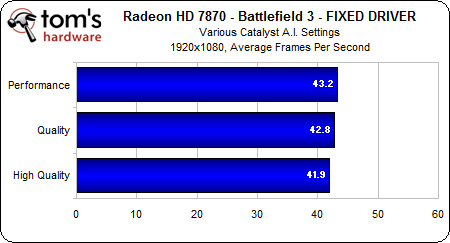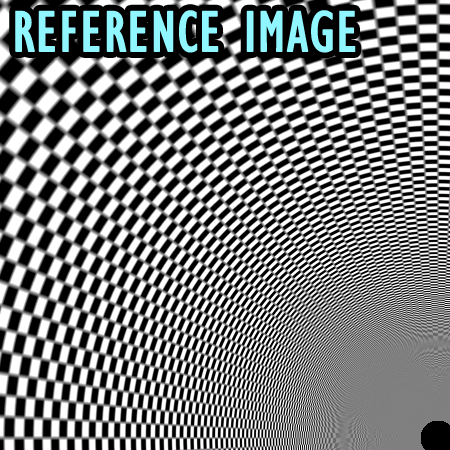Do AMD's Radeon HD 7000s Trade Image Quality For Performance?
We discovered blurry textures when we reviewed the Radeon HD 7800s, so now we're performing an in-depth investigation. Why does the Radeon HD 6000 series demonstrate crisper image quality? Is performance affected? Does AMD know about the issue?
AMD Responds With A Driver Fix
We were working toward the publication of our data when AMD finally got back to us regarding our concerns.
According to an AMD representative, the company was surprised to find that our results were easily replicated. The problem was tracked back to something that could be fixed in the driver. So, regardless of whether it's a hardware or software issue, a workaround is purportedly possible. AMD has not been forthcoming about the details, but apparently our observed results are caused by an anisotropic filtering change implemented for the Radeon HD 7800 launch in order to get rid of shimmering in a filtering test. The representative claims that the driver team found the source of the issue and was able to fix it without sacrificing filtering quality or performance.
Just prior to publication, AMD provided the following official statement:
"For our Southern Island product family launch we picked a set of settings that we tested in several scenarios for image quality and found that those specific settings were providing the best overall quality. When you pointed out these issues in some games around texture quality, we went back and found one specific setting that was causing the described texture blurriness. This has now been removed and the quality of textures should be as intended, with performance unchanged. These settings will be adjusted accordingly in the 12.4 April Catalyst release, later this month."
With a pre-release version of the fixed driver in hand, we went on to see if AMD's solution solved our problem without negatively impacting anything else. First, let’s look at the texture quality results:
Excellent. The new driver fixes the texture blurriness issues. And, at default settings, the Radeon HD 7870 series textures appear at least as crisp as the Radeon HD 6970. This is very good news indeed.
But now that we see the problem was addressed, we must ask if performance takes a subsequent hit? Do frame rates at default settings drop to what they were at the High Quality slider position in the old driver?
Get Tom's Hardware's best news and in-depth reviews, straight to your inbox.
Despite the obviously higher image quality provided by the fixed driver, resulting performance is almost identical and well within a margin of error.
The frame rate differences in Metro 2033 are also insignificant.
The same story applies to Crysis 2.
Thankfully, performance seems unaffected by the fixed driver and accompanying image quality improvement.
Finally, since AMD claims that its problem was the result of an anisotropic filtering technique, we thought it would be a good idea to compare the output. Does AF suffer because of the driver fix?
Anisotropic filtering is identical between the Radeon HD 7800 launch driver and the beta driver AMD sent to us. The 3DCenter filter tester appears to produce the same output on the Radeon HD 7870 with either driver, while the Radeon HD 6970 demonstrates inferior filtering compared to the 7000 series. Even when playing back video of the tunnel test, we couldn't notice a difference in shimmering between the launch and fixed driver.
Current page: AMD Responds With A Driver Fix
Prev Page The Performance Impact Of Lower-Quality Textures Next Page A Texture Quality Problem Confirmed And FixedDon Woligroski was a former senior hardware editor for Tom's Hardware. He has covered a wide range of PC hardware topics, including CPUs, GPUs, system building, and emerging technologies.
-
lahawzel These differences are things that no one would ever notice if tech review sites didn't point them out.Reply
Well, not that I mind knowing that it can be fixed with a driver update, but I find it unnecessary for the average gamer to worry about these minor differences with image quality (knowing it's "fixed" is more of a placebo than an actual improvement of gaming experience). Not to mention that the typical gamer plays on 6-bit TN-panel monitors because "HURR 1ms RESPONSE TIME HOLY SHIT BEST SCREEN EVER" and they in turn elect to give up the superior color gamut and viewing angles conferred by IPS panels. They ought to the last ones who deserve to complain about image quality, at any rate. -
buzznut Huh, don't know about all of that but thx for the article. I do think its important to bring such things to the vendor's attention and follow up to see if they respond appropriately. Good job!Reply
-
therabiddeer Is it just me or is toms heavily biased towards nvidia? We see tons of articles for the Nvidia 6xx but very few for the 7xxx. Nothing negative for nvidia, but an article like this for AMD's, which is already being fixed even though it is undetectable... and the fix doesnt even yield a real change in framerates.Reply -
the associate "HURR 1ms RESPONSE TIME HOLY SHIT BEST SCREEN EVER"Reply
HAHAHAHAHA
Oh man that made my night. But yea, that's exactly why I just got a panny st30 screen, tn's are just garbage, and lcd just can't do black. As for framerate lag? Doesn't affect my average scoreboard k/d ratios, or lap times, or whatever other "precision" timing actions both online and offline.
Least I got a screen that can do my cards justice, this also makes me glad I got my crossfire setup with the 6780's instead of waiting for the 7000 series...
-
SteelCity1981 Nothing new really early driver support for new graphics cards always have their bugs, but normally by the 3rd supported driver version a lot of the generel bugs are normally fixed, because by then a lot more people own that card series thus giving a lot more feedback to the gpu company about the drivers suppported for that card.Reply -
neon neophyte Do AMD's Radeon HD 7000s Trade Image Quality For Performance?Reply
No, no they do not -
airborne11b the associate"HURR 1ms RESPONSE TIME HOLY SHIT BEST SCREEN EVER"HAHAHAHAHAOh man that made my night. But yea, that's exactly why I just got a panny st30 screen, tn's are just garbage, and lcd just can't do black. As for framerate lag? Doesn't affect my average scoreboard k/d ratios, or lap times, or whatever other "precision" timing actions both online and offline.Least I got a screen that can do my cards justice, this also makes me glad I got my crossfire setup with the 6780's instead of waiting for the 7000 series...Reply
Going from a dell u2711 2560 x 1600 to a asus vg278h 120hz 2ms tn panel, there is a clear difference in gaming. The u2711 compared to vg278h feels sluggish. The image quality, sharpness and color is clearly better in u2711, but the lag is terribly noticable.
Once you get a real gaming monitor, you will see the difference for yourself. TN 120hz monitors are the only true choice for pro gaming, imo.
